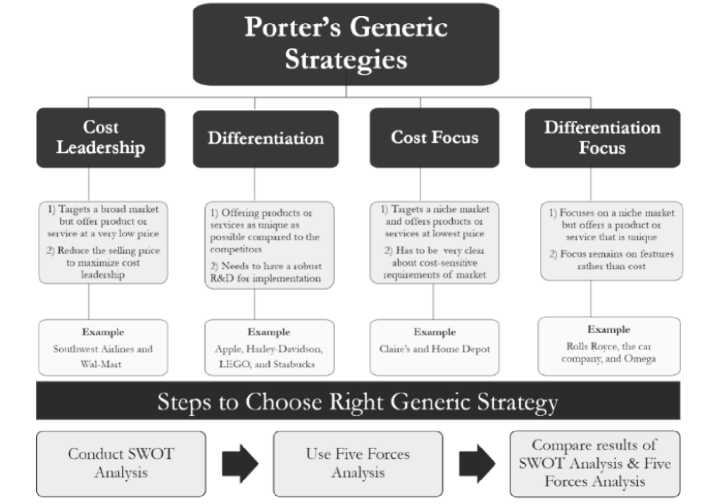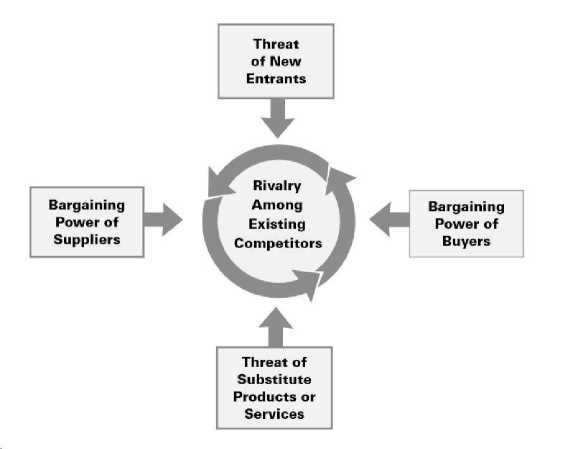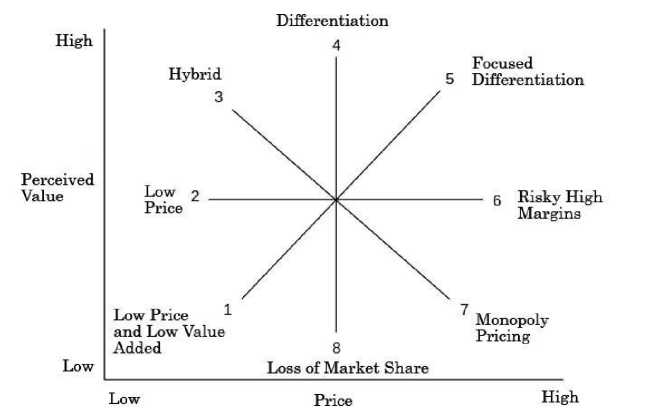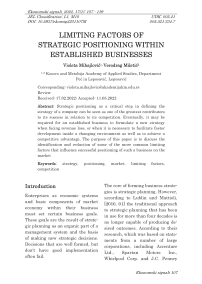Limiting factors of strategic positioning within established businesses
Автор: Mihajlović Violeta, Miletić Verodrag
Журнал: Ekonomski signali @esignali
Статья в выпуске: 1 vol.17, 2022 года.
Бесплатный доступ
Strategic positioning as a critical step in defining the strategy of a company can be seen as one of the greatest contributors to its success in relation to its competition. Eventually, it may be required for an established business to formulate a new strategy when facing revenue loss, or when it is necessary to facilitate faster development inside a changing environment as well as to achieve a competitive advantage. The purpose of this paper is to discuss the identification and reduction of some of the more common limiting factors that influence successful positioning of such a business on the market.
Strategy, positioning, market, limiting factors, competition
Короткий адрес: https://sciup.org/170204038
IDR: 170204038 | DOI: 10.5937/ekonsig2201107M
Текст научной статьи Limiting factors of strategic positioning within established businesses
Enterprises as economic systems and basic components of market economy within their business must set certain business goals. These goals are the result of strategic planning as an organic part of a management system and the basis of making new strategic decisions. Decisions that are well formed, but don't have good implementation often fail.
The core of forming business strategies is strategic planning. However, according to Lublin and Mattioli, [2010, 01] the traditional approach to strategic planning that has been in use for more than four decades is no longer capable of producing desired outcomes. According to their research, which was based on statements from a number of large corporations, including Accenture Ltd., Spartan Motors Inc., Whirlpool Corp. and J.C. Penney
Co., strategic planning as they knew it was not an optimal solution in today's climate, especially during the times of crisis and recession.
,ccording to Geo Strategy Partners [2010], in a world that is constantly evolving and changing, in order to develop a viable strategy, one must shift to strategic positioning as the key component of business strategy.
It was clear that the traditional approach to strategic planning was no longer sufficient to assist in determining the most efficient way to use their resources and help seize the best opportunities available. Bischoff-Turner [2008] agrees that companies that wish to advance, but have perfected the basics, should implement strategic positioning.
Their application, however, has proven that even the most frequently used strategic positioning models are not foolproof. Some factors are not designed for these models and hence restrict their application. In this study, we will look at their limitations.
The Positioning Concept
Not to minimize the significance of planning as a process through which managers formulate their overall strategies, in recent times there has been a noticeable in- crease in the number of scientists and researchers whose work focuses on emphasizing the importance of strategic positioning of companies in the market. The complexity and difficulty of the ever-changing market influences this approach.
Porter [2006], the most influential advocate for strategic positioning, emphasizes that strategy is about creating a distinct and valuable position, which entails engaging in activities that differ from competitors' or performing similar activities in new and interesting ways.
With his school of thought, Porter opens a new chapter in understanding the role of strategic management. ,s the number of consulting firms increases, this statement becomes ever more factual. Companies continue to refine this school and apply it to many of their customer companies as a practice.
Chowdhury [2013] claims that her research would be sufficient for further research and that her suggested guidelines are appropriate for product positioning in a company. She does, however, acknowledge that her research has limitations, as do most in this field of study, because it is based on reports and theory from a Western perspective. Most would be unsuitable for the ma5ority of developing countries.
By definition, strategic positioning is "a firm’s decision on how to organize its actions and operate to effectively serve customers and compete against rivals." [Bright et al., 2019]
To quote Whitler [2021] "a positioning concept" is a tool that enables leaders to create, test, and perfect the ideas upon which new brands and/or products are created and launched. It serves to highlight the consumer's problem, present an explanation as to what a company's brand is intended for, to prove that it can provide and conceptually compares it to competitors' in a manner that is based on customer demands. ,ccording to her, the development of a superior positioning concept is guided by four fundamental elements:
-
1. , positioning concept must be an independent document.
-
2. It mustn't be developed in isolation.
-
3. Idea generation should be diverse.
-
4. In practice, this procedure necessitates numerous iterations.
Strategic positioning is involved with how a company as a whole distinguishes itself from competitors and provides benefits to specific types of consumers. [Wickham, 2001, 230]
With these statements, we can conclude that strategic positioning is a process and a business strategy, that it is about finding a unique position in an enterprise market where a firm would get prominence and ultimately dominate for an extended period of time while focusing on resources.
The question of how to position oneself in the marketplace emerges, as does the question of how and with what resources one would be able to achieve a superior position in comparison to their competitors.
The ,nalysis and the Development of Strategic Positioning
The analysis and the development of strategic position poses as a complex and challenging venture whose realization process function is in creating a company’s strategy. Identifying incentives and limiting factors shapes the process of the creation of strategic position.
Rational behavior in the process of strategic positioning sometimes requires putting oneself in the place of a competitor, which allows us to predict their moves, but also to see our own position through the lenses of others. Of course, quality information is a prerequisite for a winning combination in making business decisions.
Information is a front-line weapon of the modern era and the main imperative of today’s economy.
Competitors frequently have more quality and reliable information which gives them an advantage to respond adequately.
In this whole landscape of the competition, information, global busi- ness, financial innovation, the development of a strategic position should be a continuous process.
Strategic management, through meticulous and precise procedures, allows companies to identify, develop, strengthen, provide benefit and even surpass their competitor's position. [Fuertes et al., 2020, 21]
|
Objective |
Match the organization's distinctive capabilities with the customer value requirements in each market target (How do we want to be perceived by targeted buyers?) |
|
Desired result |
Gain a relevant, distinct, and enduring position that is considered important by the targeted buyers |
|
Actions by the organization |
Design and implement the positioning strategy (marketing program) for the market target. |
Figure 1. How positioning works
SWOT and SP,CE Matrix
,nalyzing strengths and weaknesses enhances problem awareness and serves as a starting point for establishing company’s business goals.
The evaluation of the synergistic impacts of at least two economic and financial criteria strengthens or weakens influencing factors.
, significant variety of factors that can influence the choice of strategic positioning have become general knowledge. Such factors are: financial power, natural resources, human factors, geographical locations, distribution channels, price, consumer perception, world recession, competition, globalization, technology, the fourth industrial revolution, demographic trends, geopolitics, natural disasters, inflation, disease (for example, CO3ID-19 has accelerated the growth of telecommunications, telemedicine, home-business, online education
[Collis, 2021], services sector, particularly home distribution channels), and so on.
In general, we can divide them into external and internal factors and classify them in proper matrices to see a company's true status.
These factors have an impact on extensive operations of internal
(weaknesses and strengths) and external (opportunities and hazards) analysis of each specific ob5ective of a company.
This is the foundation of SWOT analysis as an initial step, but it is not the greatest strategy for proper analysis due to its static perspective and inability to determine a company’s value.
|
Positive |
Negative |
|
|
Internal |
Strengths Qualities that set a company above others. |
Weaknesses Factors that put ones company at a competitive disadvantage. |
|
External |
Opportunities Environmental factors that the company could use to its advantage. |
Threats Environmental factors that could cause problems for the company . |
Figure 2. SWOT,nalysi s
,ccording to Lee [2015, 140 - 163], the fundamental flaw of the SWOT analysis is its reliance on qualitative analysis, which only identifies the value of specific factors without qualitatively assessing them.
SP,CE (Strategic Position and ,c-tion Evaluation) matrix covers two internal dimensions (financial strength and competitive strength) and two external dimensions (environmental stability and industry’s strength).
This matrix was designed by Rowe [Rowe et al., 1982] with intentions of assessing which tactics are best suited for a competitive firm.
IA
Conservative Position
Market Penetration
Market Development Product Development Related Diversification
FS------------------
Defensive Position
Retrenchment
Divestiture
Liquidation
Aggressive Position
Horizontal Integration
Market Penetration
Market Development
Product Development
Diversification
-----------------CA
Competitive Position
Horizontal Integration
Market Penetration
Market Development
Product Development
Figure 3. SP,CE matrix, Source: [Rowe,1982]
The company's stance in four squares is classified as aggressive, competitive, conservative, and defensive after qualitative analysis of each value that had entered the matrix and was based on the estimated unit vector. [Nouri et al., 2008, 43-52]
Competitive and NonCompetitive ,dvantage
, large number of researchers detailed how corporations compete with one another. In the article Conceptual Framework for the Strategic Management: , Literature Review-Descriptive , whose re-searchincluded an examination of
5,400 publications , Fuertes et al. [2020, 21] have referenced a number of researchers. Treacy and Wiersema touch upon operational excellence, product leadership, and client's trust. Quezada et al. describe the process for formulating business strategies in small and medium manufacturing enterprises. March expands on exploitation and exploration. In terms of innovation, Miles, Snow, Dekoulou and Trivellas present a methodology for identifying and exploring new goods and market prospects. ,nd Porter, for example, explains what tactics are used for cost leadership and product differentiation (Generic strategies).

Figure 4. Overview ofPorter’s Models
,s a dynamic category, strategic position doesn't need to be finalized. Its purpose is to find the ideal target competitive position. Porter and his five forces are unquestionably the most commonly used technique for analyzing the competitive market and assisting in the evaluation of a company's competitive position. [Porter, 2008] They are:
-
1. Competition in the industry.
-
2. Potential of new entrants into the industry.
-
3. Power of suppliers
-
4. Power of customers
-
5. Threat of substitute products

Figure 5. The Five Forces That Shape Industry Competition
Source: [Porter, 2008, 27]

Picture 4. Strategy clock
This tool attempts to assess a company's strategic positioning in terms of cost monetary and perceived value. When compared to Porter’s Five forces, this model provides positions of both varieties. While the first five models are competitive, the last three are noncompetitive. These strategic positions are:
-
1. Low Price and Low 3alue ,dded
-
2. Low Price
-
3. Hybrid (Moderate Price/ Moderate Differentiation)
-
4. Differentiation
-
5. Focused Differentiation
-
6. Risky High Margins
-
7. Monopoly Pricing
-
8. Loss of Market Share
Limitations
Even though Porter`s model is very popular, it is not without its limitations. This is mentioned by other scholars in Dälken's [2014] research. ,ccording to ,ktouf [2004, 9-41], employing this structure does not ensure an impenetrable and sustainable competitive position. ,nother limit that Dälken points out through O'Shaughnessy [1984] states that Porter had no basis for selecting the five environmental forces. ,rguably the most significant weakness, Flower [2004,
67-69] and Downes [1997] critique Porter's model for failing to address digitization, globalization, and deregulation as the main reason why industrial structures have evolved over the last few decades. The Five Forces model does not assess the resources and capabilities of a company, which are also relevant for analyzing the overall profitability Regardless of being created in the 1970s, Porter's 5 Forces can still help modern businesses decide whether to stay in their current business or not.
Bowman's Strategic clock, although easier to grasp then Porter’s, is not without flaws. The boundaries between each position are somewhat blurred due to the clock formation. ,s a result, placement may be difficult to determine. Furthermore, this model does not take into account companies with multiple strategic positions.
,ccording to Trout and Ries [1972], the following factors could be limiting in strategic positioning and as a result, the other should be considered If a corporation uses initials or a restricted title, it will not be memorable. Trying to appeal to all markets reduces a product's attractiveness; hence, focusing on a certain market group is recommended. While novelty is alluring in products, changing their identity makes them forgettable. Competing with a ma5or brand could be harmful, thus shifting to a niche market to identify one’s position is recommended.
Conclusion
Many powerful organizations have lost their positions after achieving significant business success and dominating their markets due to poor positioning strategies. The positions of conventional brands and enterprises become susceptible and unstable as a result of rising upstart businesses that have garnered enormous quantities of money and capital. Customers, enthralled by new products, high-tech innovations, cultivated sophisticated needs and specific needs and preferences. This is why strategic positioning is a dynamic category that requires planning over a long period of time.
, company's success is determined by what customers think, feel, and expect from their products. The issue arises in selecting effective methods and approaches that will provide the company with a true image of where their products are positioned and the deciding factors of future strategic positions.
Identifying limiting factors allows companies to refresh and expand their skills and resources, to redefine their attitudes and abilities and to respond to external changes with new strategic choices in order to improve the existing strategic position within the existing business.
Each of the aforementioned criteria can represent a distinct area of study in terms of their particular impact on the company's strategic stance.
Список литературы Limiting factors of strategic positioning within established businesses
- Aaker, D.A., Mcloughlin, D. (2007) Strategic market management. West Sussex: John Wiley & Sons Ltd, 225-245
- Aktouf, O. (2004) The false expectations of Michael Porter's strategic management framework. Revista Universidad & Empresa, 6(6)
- Bischoff-Turner, S. (2008) From strategic planning to strategic positioning. Children's Voice, 17(3), 30-33, https://www.jstor.org/stable/48625207
- Bowman, C.C., Faulkner, D.O. (1997) Competitive and corporate strategy. London: Irwin
- Bright, D.S., Cortes, A.H., Gardner, D.G., et al. (2019) Principles of management. Houston, Texas: Rice University
- Chowdhury, P.P. (2013) Key strategies and issues of positioning: A review of past studies. American academic & scholarly research journal, 5, 55-56
- Collis, D.J. (2021) Why do so many strategies fail?. Harvard Business Review, 99, no. 4, 82-93
- Cravens, D.W., Piercy, N. (2009) Strategic marketing. Boston: McGraw-Hill Irwin, 193-203
- Dälken, F. (2014) Are porter's five competitive forces still applicable?: A critical examination concerning the relevance for today's business. University of Twente, Student Theses, http://purl.utwente.nl/essays/65339
- Downes, L. (1997) Beyond Porter. Context Magazine
- Flower, E.A. (2004) Competition, technology, and planning: Preparing for tomorrow's library environment. Information Technology and Libraries, 23, 67
- Fuertes, G., Alfaro, M., Vargas, M., Gutierrez, S., Ternero, R., Sabattin, J. (2020) Conceptual framework for the strategic management: A literature review-descriptive. Journal of Engineering, 6253013
- Geo Strategy Partners (2010) In defense of strategic positioning and strategic business models. https://www.greenbook.org/marketing-research/strategy-defined
- Lee, Y.H. (2015) Navigating SWOT-FANP with GSM method to prioritize the strategic location. Technological and Economic Development of Economy, vol. 21, no. 1, pp. 140-163
- Lublin, J.S., Mattioli, D. (2010) Strategic plans lose favor. Wall Street Journal, January 25, B7
- Nouri, J., Karbassi, A.R., Mirkia, S. (2007) Environmental management of coastal regions in the Caspian Sea. International Journal of Environmental Science Technology, 5(1), 43-52
- O'Shaughnessy, J. (1984) Competitive marketing: A strategic approach. Boston: Allen & Unwin
- Porter, M. (2006) On competition. Boston: Harvard Business School Press
- Porter, M.E. (2008) The five competitive forces that shape strategy. Harvard Business Review, 86(1), 25-40
- Ries, A., Trout, J. (1972) Positioning cuts through chaos in marketplace. Advertising Age, 43, 51-54
- Rowe, A., Mason, R., Dickel, K. (1982) Strategic management and business policy: A methodological approach. Boston, MA, USA: Addison-Wesley Publishing Company
- Whitler, K.A. (2021) Positioning for advantage: Techniques and strategies to grow brand value. Columbia University Press
- Wickham, P.A. (2001) Strategic entrepreneurship: A decision-making approach to new venture creation and management. London: Financial Times, 2nd Edition


